LONDON-Making it Up at Marsden Woo Gallery (8 November to 22 December, 2018) is the first major exhibition of new work by Alison Britton in the UK since her overly crowded retrospective at the Victoria and Albert Museum.
It is one of my pleasures as a critic to see artists’ produce their best work in later years. One might imagine that this is common, the wealth of experience, a more refined and educated eye, and an ease with process. It happened with Beatrice Wood and yes, Bernard Leach. And I have witness this evolution with Briton since I first came to know her and her work in 1974.
The problem with artists aging is that they often settle on their signature style and the aesthetics are dulled by the law of diminishing returns. Ruth Duckworth once said to me that “my greatest fear is too look back on my career and realize that for the last two decades I have been imitating myself”.
Mature artists that flourish do so in one of three ways. There are those who return with vigor to their earliest work. Sir Anthony Caro for instance was working more with the figure towards the end. Some make a radical, unexpected shift. And then there are those who keep to their known aesthetic but take its metaphors and bring a new sophistication. Britton falls into this category.
From the 70’s on her defining form was the pitcher. It still is. Then she drew figuratively on the vessels in a manner, which I am sorry to say, was whimsical. The forms on the other hand were the opposite. They had hard ledges on the rims, sharp beak-like spouts (birds often appeared on the pot surface). They were formidable.
Her influence has been considerable, one of the few artists to make an impact from her generation and came from the new wave Royal College of Art graduates, which is where we met. She also studied at the Central School of Art which had a long tradition going back to Duckworth, Ian Auld and Gordon Baldwin in the 1960’s of Organic Abstraction. One sees that in her asymmetry, but the rest her early forms were tight. It might be added that the other Central artist of consequence at that time was Andrew Lord with whom Britton had a friendship even though Lord avoided the ceramic community like the plague.
It was not just that her work drew admiration but she could talk and write about pottery, an eloquent voice whether expanding on her own art or explaining, as she did for some time in her essay, writing on others artists.
Looking at the Marsden Woo show, one is not struck by any departure from work since 2010. So what has changed. It is all just better. Firstly, Britton has become a fluid abstract painter. Look at the close-up of the tray Flotsam (2018) and after feeling the energy of the painting alone, go on to examine how this dances with the form, its frame and ridges. The fit is seamless. And yes, if must be given a title, this is organic abstraction. Full circle.
These wall plates are particularly pleasing, they mix functionality, at least conceptually, with flat art. This is an old tradition in pottery going back to Ancient Greece where flattish vessels were hung on the wall and extra attention was paid to the side that faced outward.
The next virtue is that it all looks so effortless. Whether this the case or not, there is no obvious tension or striving for effect whatever the reality might be. But that does not matter. Great pots, Hamada said, have the feel of walking down a mountain in a cool breeze.
Hard rims of her early work are now soft, uneven and primal. On the show is a pitcher with her jutting elbow handle, a memory from the past, but the best pitcher has a tube that penetrates the form, pouring at one end and serving as a handle at the other. It could have been formed by nature. And there are footnotes or homages to other artists that have influenced her such Betty Woodman, obvious and unapologetic.
Again there has been no sudden revolution. Since 2010 Britton’s pots have been morphing by degrees, not into a new voice, but new a new tenor, and clam syncopation. It is now more gestural, raw and spontaneous, the latter being absent from earlier work. The pots are stronger, the inner and outer are not in contest but quietly symbiotic, a united front. This exhibition shows the artist at her best and confident, not a bad 70th birthday present.
––Garth Clark
Related reads:
Victoria & Albert Museum Interviews Six People on Alison Britton’s Big White Jug
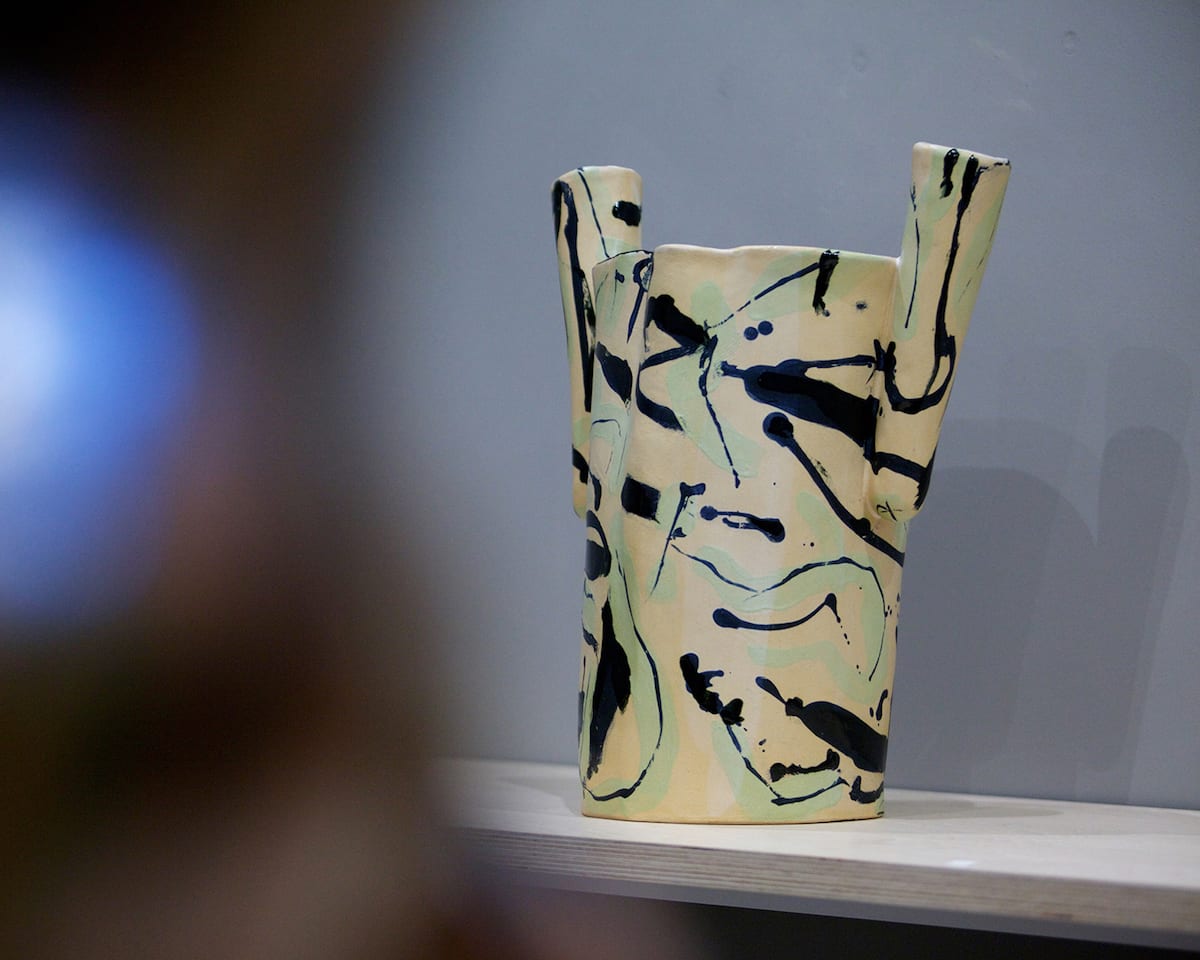
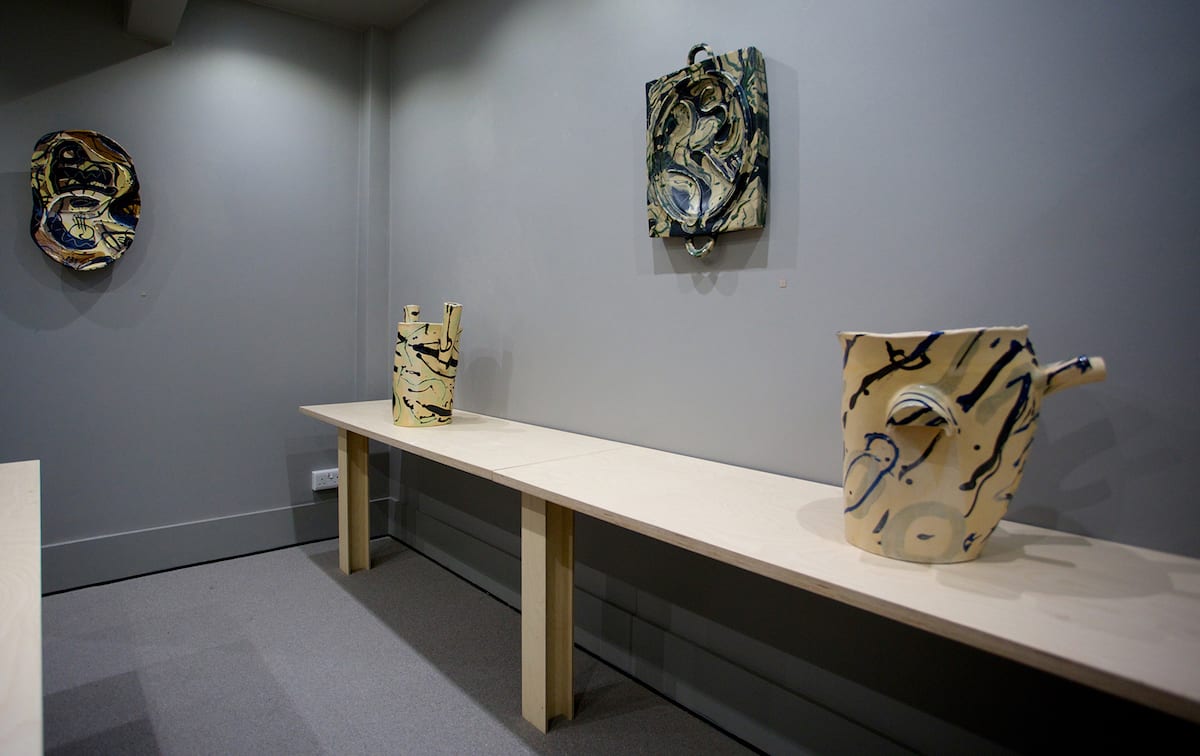
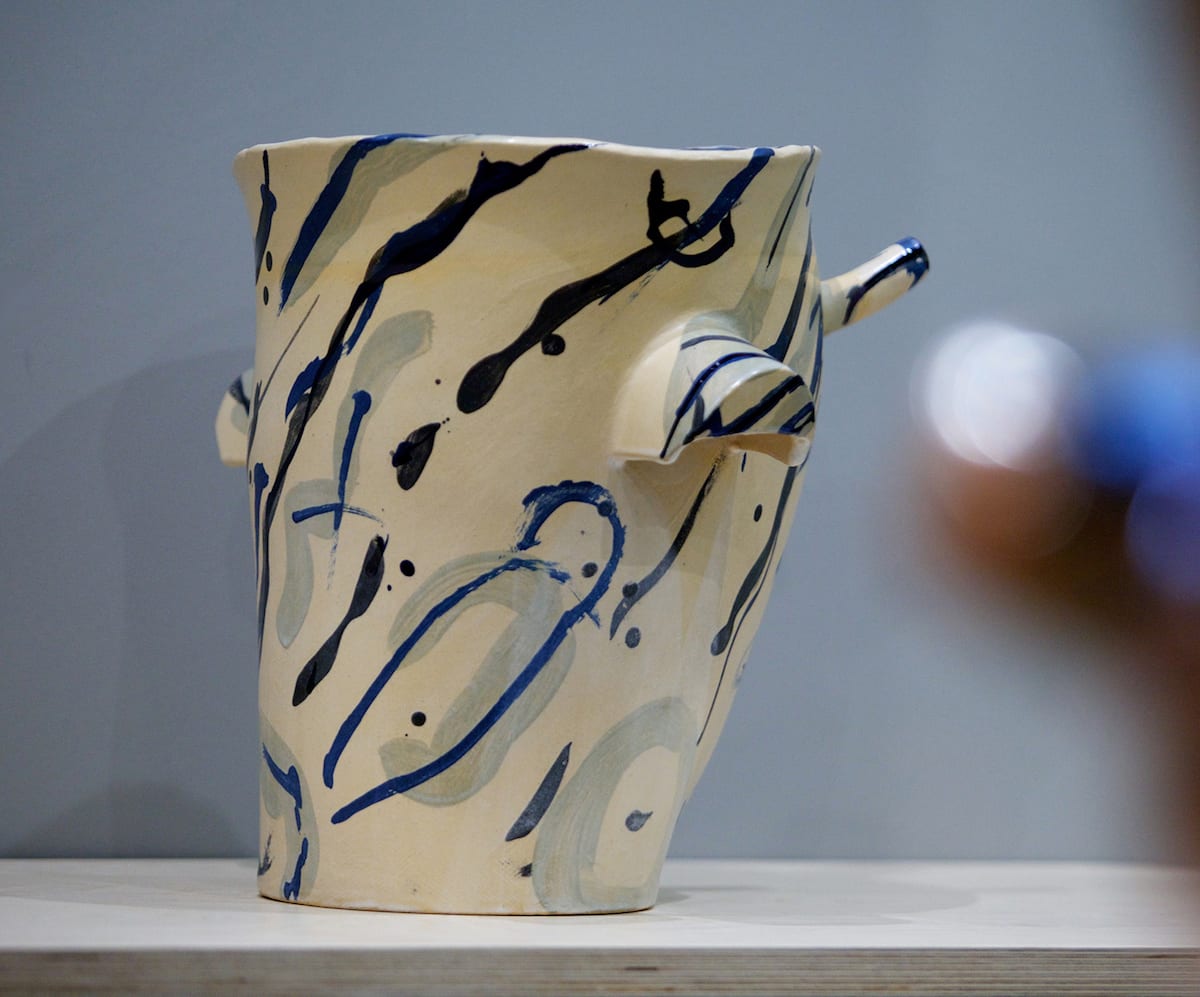
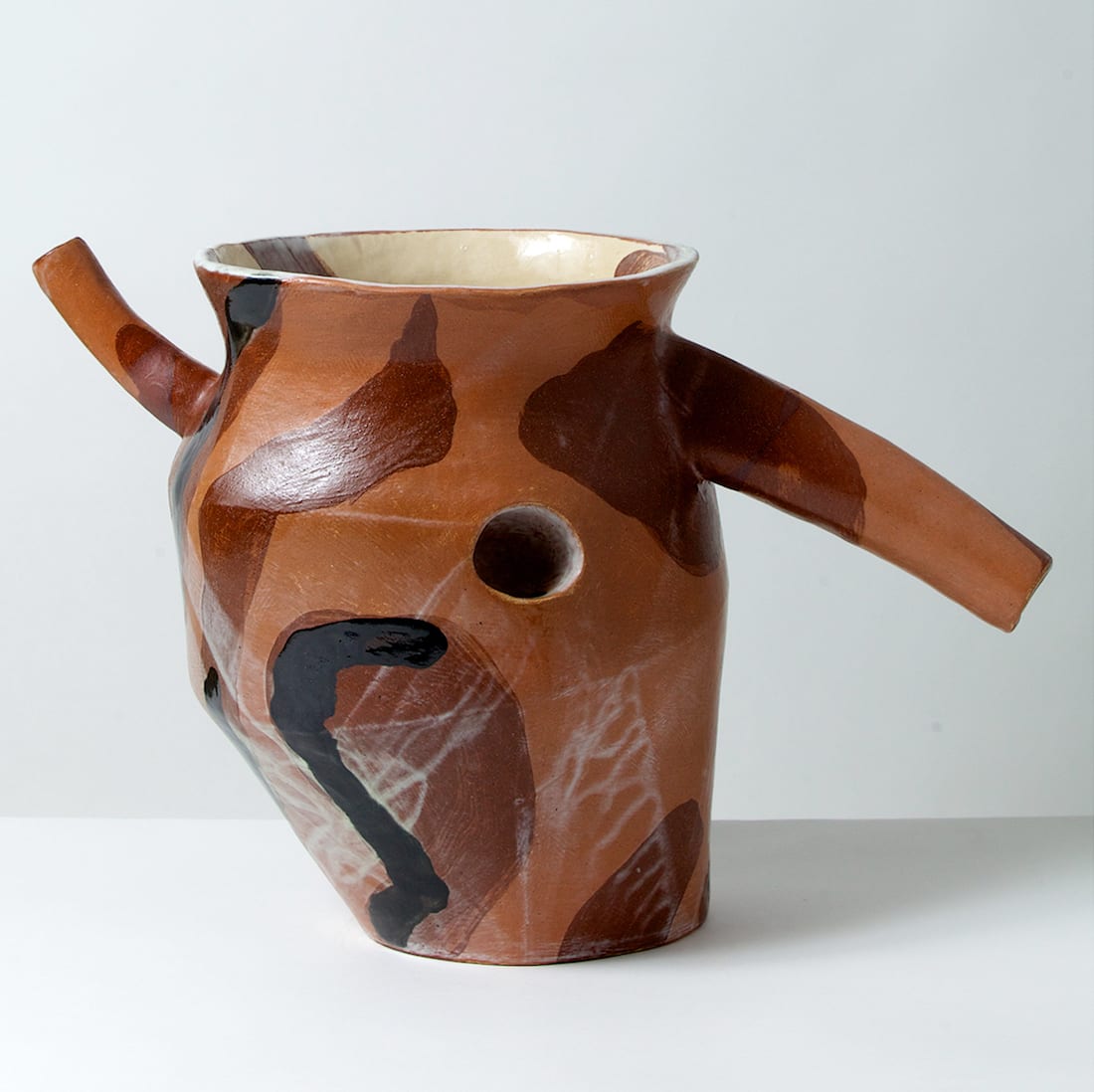
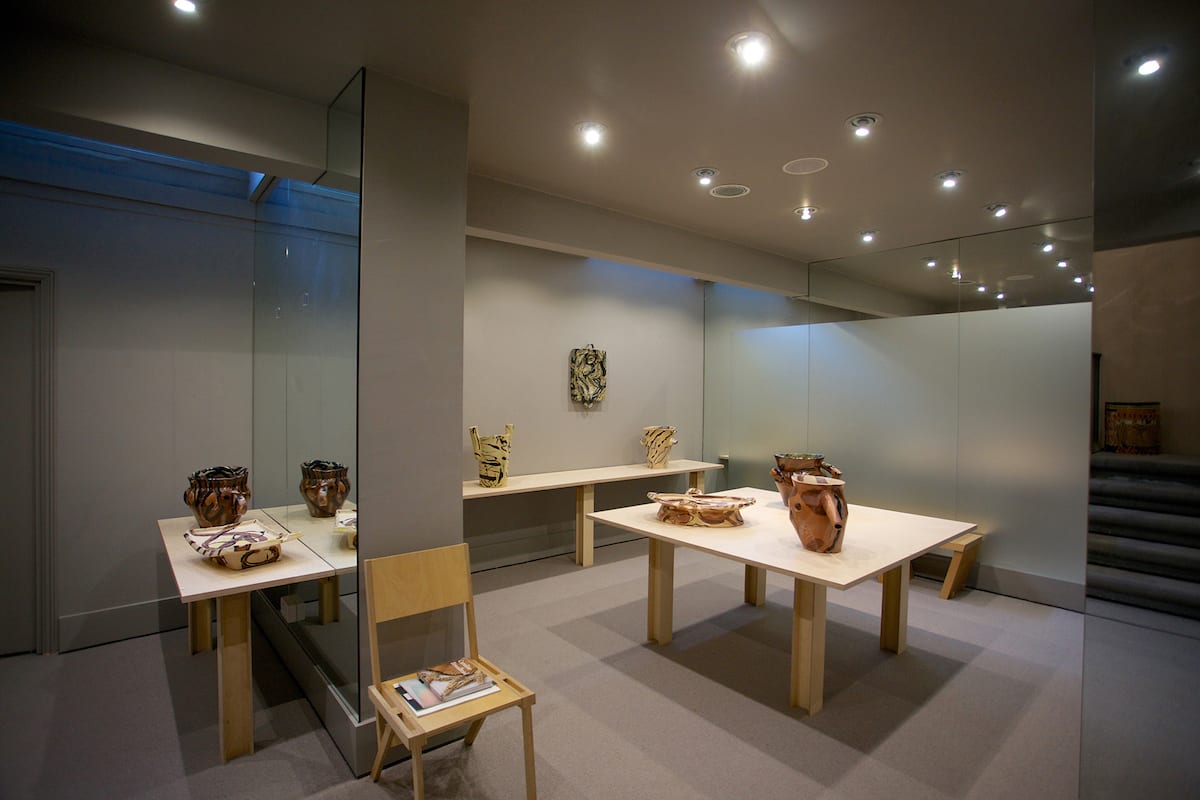

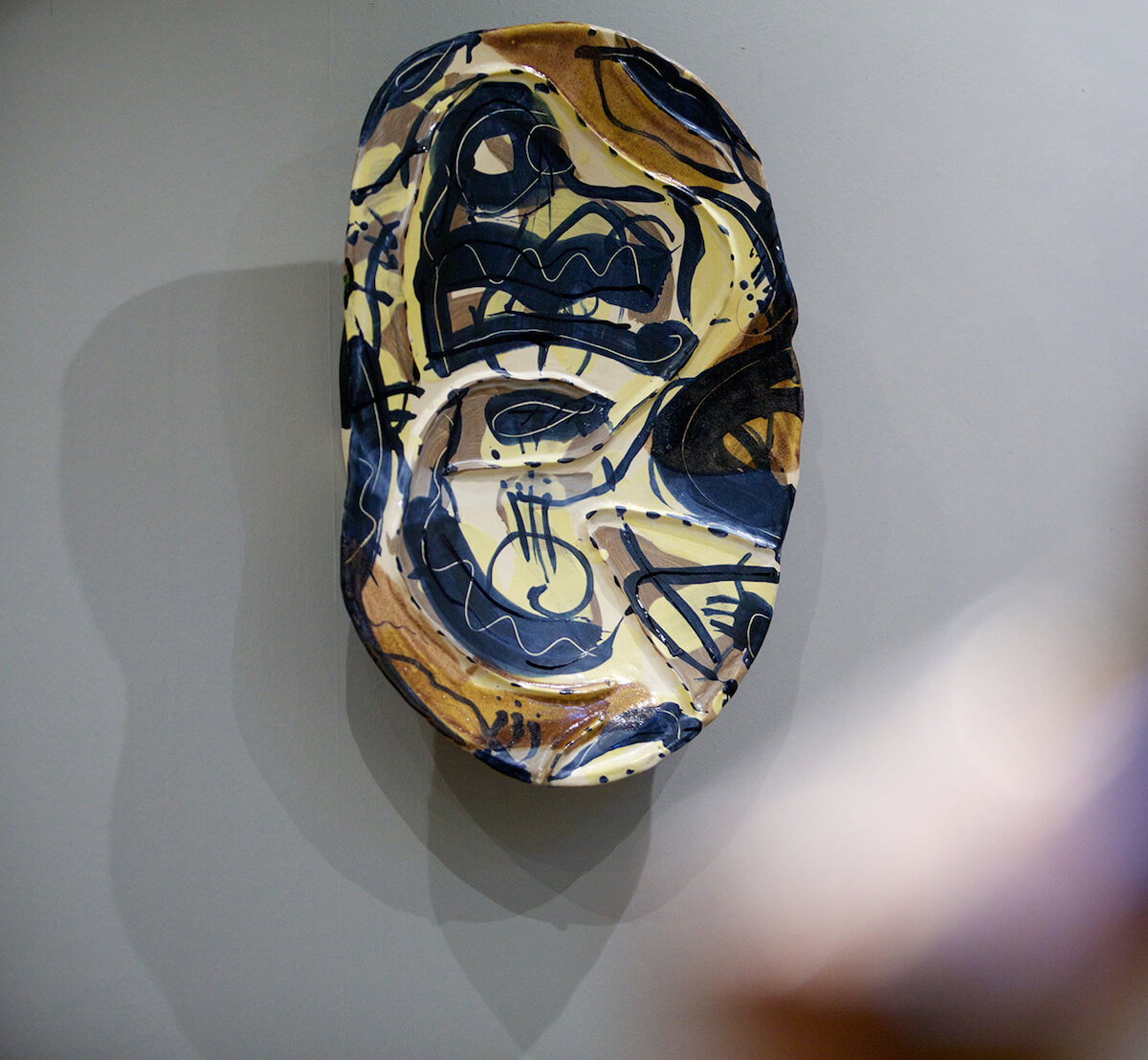
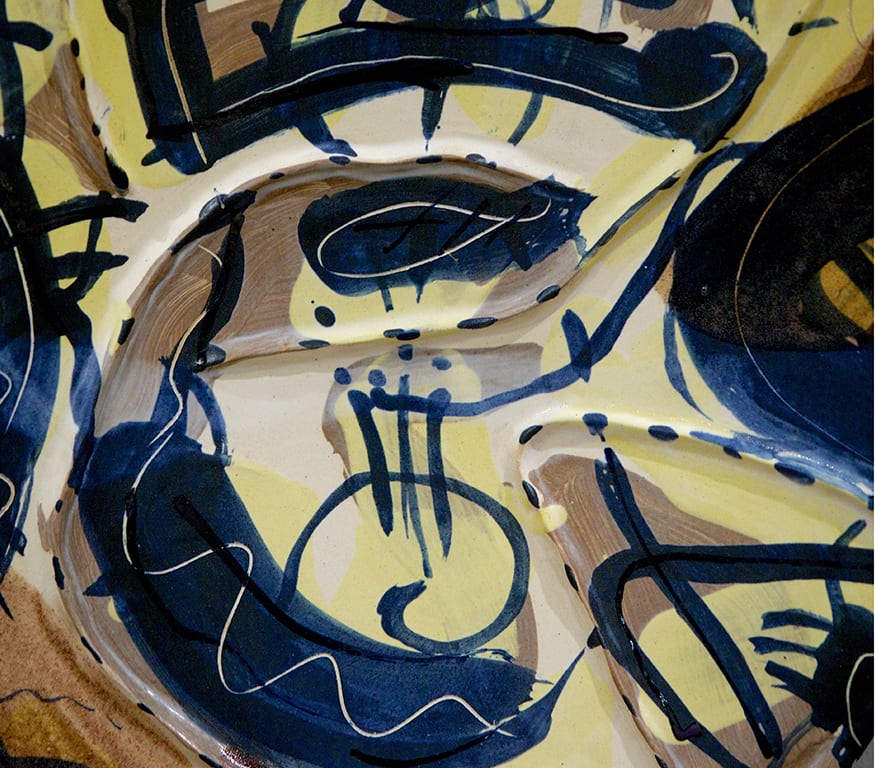
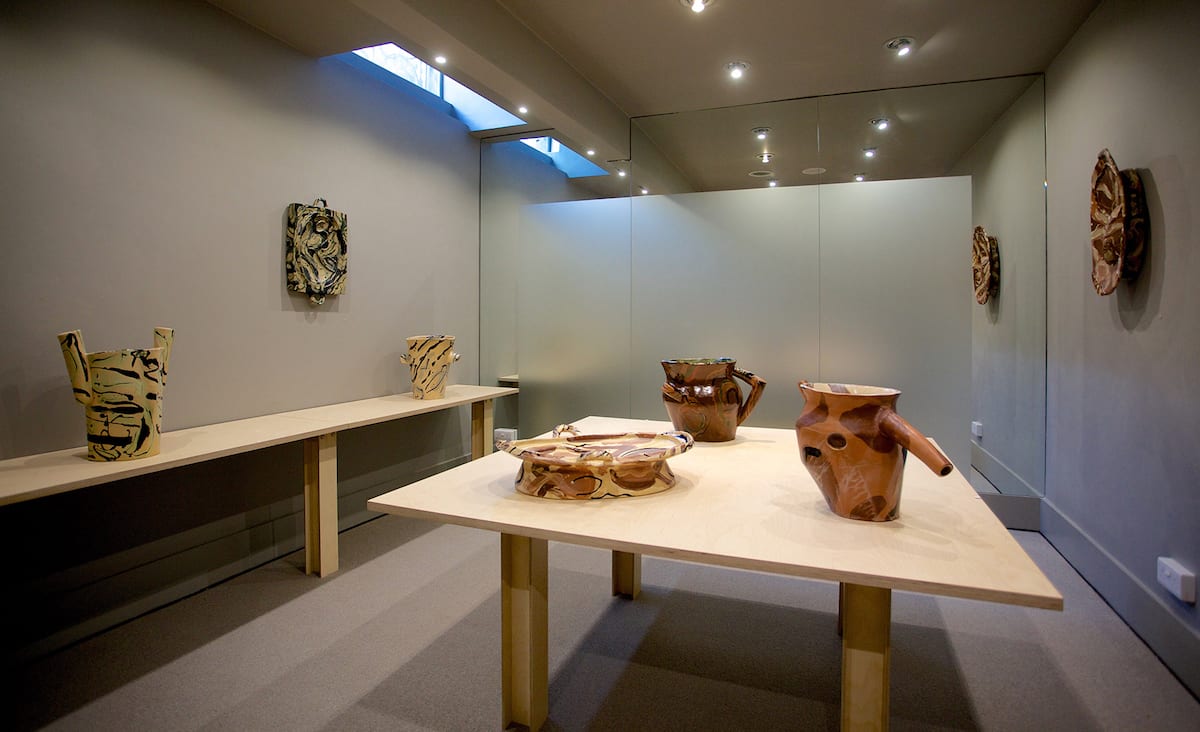
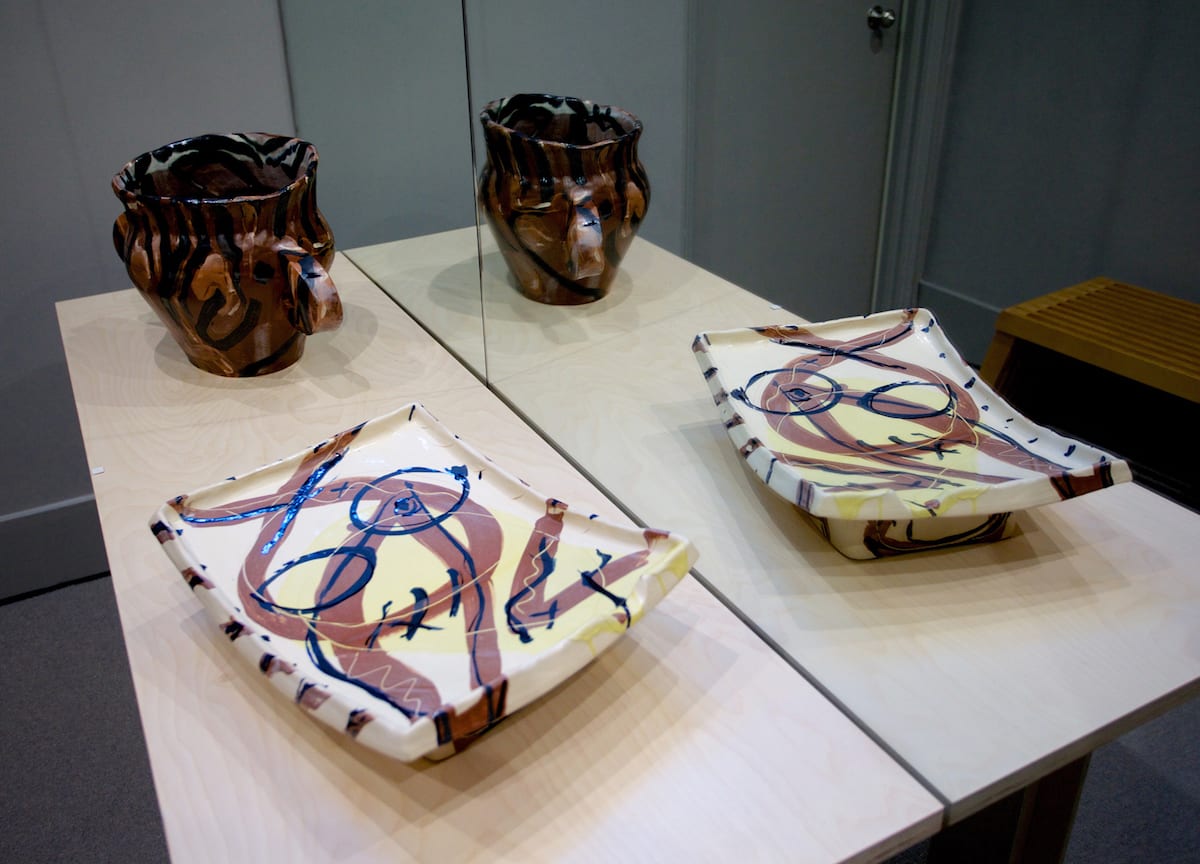
Add your valued opinion to this post.